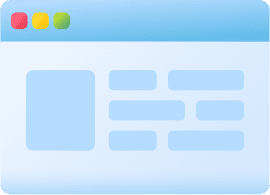Process Design Engineering
Introduction- Process Plant means an industrial occupancy where materials, including flammable liquids, combustible liquids, or Class 2 gases, are produced, or used in a process. Process plant industry covers a wide spectrum of industries like Oil & Gas Production, Chemical, Nuclear Fuel Processing, Petroleum Refining, Gas Supply, Electricity Generation, Steel, Water & Sewerage, Food & Dairy Industry. The Program focusses on Process Equipment, Layout, Piping Design, Plot Plans & Isometrics for Process Plant Engineering with Practical Examples Course Details- • Certificate- Process Design Engineering • Duration- 4 Months (Only Sunday Batch), 3 Months (Saturday-Sunday)• Duration in Hours- 100 Hours• Eligibility- Degree/Diploma into Chemical Engineering• Training Mode- Online Live / Offline Declaration- • This training program is on AUTONOMOUS basis conducted by Petromech. • Petromech has right to expel any student at any time for misbehaviour, poor attendance without refunding the fees. • Petromech has its own rules and regulations about conducting examinations and assessment of examinations. Why Petromech?• Nice learning environment.• Good and experienced faculties from the industry. • Skill certification. • Placement support. • Full time and part time batches.• Online and offline training mode.• Provide study materials, case studies and recorded session.Course Contents:1- Basic Engineering Package:Basic Concepts• Basic Terms• Abbreviation• Purpose Of PFD• Purpose Of P&ID• Information Provided On PFD• Information Provided On P&ID• Process Related Information• Piping Related Information• Instrumentation Related Information• Control Related Information• Special Information• Design Codes• Engineering Standard Practices• Client’s SpecificationsSymbols and Numbering Systems• Symbols• Piping• Valve• Control Valve• Actuator• Instruments• Notation• Numbering• Tag System• Equipment• Instrumentation And Control• Combining Process And HardwareUnderstanding About PFDs• Why PFD Is Necessary?• PFD Information In P&ID• Heat And Mass Balance• Operating Conditions• Physical PropertyUnderstanding About P&IDs• Why P&ID Is Necessary?• Equipment and System• P&ID and DatasheetsPFD And P&ID Development• Development Of A Simple Basic PFD• Development of A Simple Basic P&ID• Valves – Type And Application• Development Of Control Loops• Need And Location Of Measuring Instruments• Piping And Insulation Information• Incorporation Of Misc. Information In P&ID• P&ID Evolution And Changes In Plant LifeP&ID Life Cycle and Case Studies• P&ID Life Cycle• Why P&IDs keep changing• Exercise: Reading P&IDs• Case Studies• Future Studies2- Line Sizing & Hydraulic Calculations• Terms & Definitions• Line sizing using velocity criteria for liquids• Line sizing using velocity criteria for gases• Pressure drop calculations for liquids using darcy’s equation, manning’s equation and Hagen Williams equation• Example for line sizing for gases and liquids using velocity criteria as well as pressure drop criteriaFluid Phase Behavior & Pump Hydraulics• Composition of Well Fluid• Determination of Well Fluid Composition• Well Fluid Phase Behavior• Equations of State• Definition of Pump• Classification of Pumps• Selection of Pumps• Pump Material of Selection• Steps Involved in the Pump System Design• Steps involved in the Pump Hydraulic• Calculations• Pump Characteristic Curves3- Process Equipment Design and Simulationa) Heat Exchangerb) Distillation Columnc) Control Valved) Pressure Relief Valve Sizinge) Vesself) Separator4- Process Simulation• Development of Simulation• Difference between Steady-Stade & Dynamic Simulation• Tutorials on Pumps & Compressors• Tutorials on Distillation Column (shortcut method)• Tutorials on Rigorous Distillation Columns• Tutorials on Reaction Systems• Tutorials on Oil Characterization• Tutorials on Crude Distillation Column6- Safety Engineering:• Hazardous Area Classification• Introduction to HAZOP Study ...
View More


